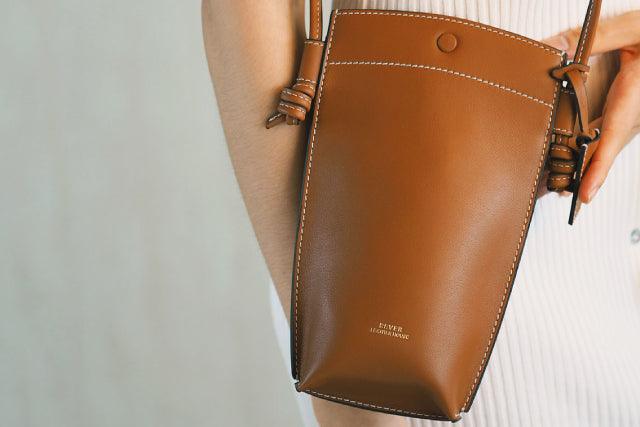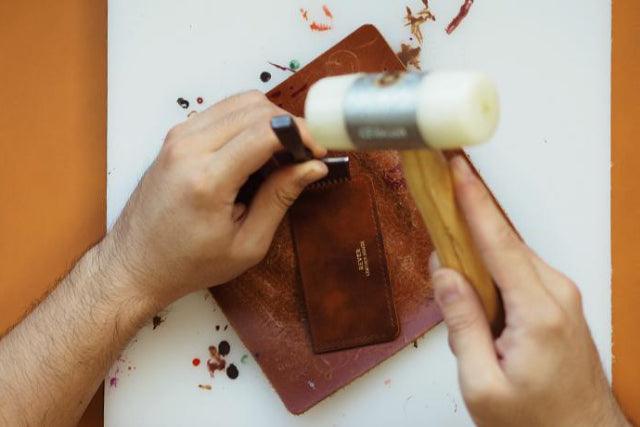Understanding The Processes Of Making Luxury Leather Goods

Leather is used in many luxury leather goods due to its durability and natural beauty. Apart from brand design and craftsmanship, one thing that makes luxury leather goods stand out from the masses is the base material. This luxurious material is obtained from animal skins and hides that have been treated to various degrees to create the material we know as leather. Several stages are involved in the production of leather before it is transformed into the familiar material used to make luxury products, from accessories to bags. From the selection of first-tier grades to stages of unique processing, the work that goes behind making luxury leathers makes a huge difference in the look, feel, and longevity of each product.
Leather Cleaning
Some of the common hides used for leather come from cattle, goats and buffalo. These hides are preserved in either salt or transported fresh in refrigerated conditions to tanneries around the world, where they will process the hides. The first of the five steps is cleaning the hides and skin, also known as wet processing. The removal of dirt and flesh occurs in this process, along with the removal of wool and hair.
When the hides are clean, the leather may be split to form various grades of leather, such as top-grain leather and other leather grades. Full-grain leather contains the entire grain layer without removal of the surface and is considered the highest quality of leather used in luxury leather products.
Leather Tanning
The next step is tanning which is a process that stabilises the proteins, such as collagen, in the raw hide to increase the stability of the hide. Tanning increases leather's thermal and chemical stability, making them less susceptible to decay and decomposition. Tanned hides will form the flexible yet sturdy material that is now suitable for various applications. The tanning process has been mastered over many years and renowned European tanneries produce high-quality leather that is used to craft the luxury leather goods.
Leather Retanning
The leather will be given their specific properties in the retanning processes. This process includes aniline dyeing, softening, drying and buffing. For full-grain leather, minimal alterations are made to its surface to maintain its durability and natural grains. Semi-aniline dyes are used for high-quality leather to add colour without altering the leather's properties. When full-grain leather undergoes a semi-aniline colour treatment, the pigmentation is not allowed to cover the pores and natural grains of the leather.
Other leather processes
After retanning, the leather may undergo other processes to create different finishes and textures depending on the brand's style and preferences.
Leather Milling
Milling causes the leather to be further softened after retanning. The leather is placed in a large dry tumble drum, enhancing the natural grain structure. Rever's Judson Zip Wallet is made from Italian calf leather which has been milled. This results in its signature "pebbled" appearance and its soft, supple texture.
Leather Shrinking
Leather can undergo a shrinking process which pulls the material closer together to form gorgeous heavy grains with pronounced veining. This shrinking process done to calf leather from France creates a deep texture without rigidity, maintaining a soft, supple touch.
Leather Embossing
One should be careful when purchasing embossed leather. Embossed leather can refer to leather stamped with a pattern to give it a full-grain appearance. However, embossing can also be done to full-grain leather without damaging the natural fibres, thus, maintaining its strength and quality. Rever pieces are crafted only with full-grain leather, including our embossed bovine leather from Germany. This stiff, firm leather has regular grains and a hardy surface. The scratch-resistant quality makes it the ideal material for products such as our Horseshoe Lanyard Key Holder.
Conclusion
Making leather goods from high-quality leather involves careful treatment of leather by tanneries who have mastered the craft over many years. The processes involved in producing quality leather goods may be arduous, but they are necessary to create this luxury material we have come to love. It is essential to take proper care of your full-grain leather goods so that they can last you for many years.
At Rever, our products are made from certified luxury grade leather to give you the best quality. Our full-grain leather is sourced from renowned tanneries in Europe to bring you expertly crafted luxury leather bags in Singapore.




